Visual Anatomy & Physiology Chapter One Review Questions – Flashcards
Unlock all answers in this set
Unlock answersquestion
All living things perform what same functions?
answer
Respond, Adapt, Grow, Develop, Reproduce, Move
question
Anatomy means
answer
Study of the structure of the body
question
Physiology means
answer
Study and focus on functional properties and anatomical structures
question
Small organisms
answer
transfer energy & waste across exposed surfaces
question
Larger organisms
answer
Must perform digestion, respiration, excretion, and circulation
question
Macroscopic anatomy
answer
Study of large structures and features that can be seen with the unaided eye
question
Microscopic anatomy
answer
Study of structures that cannot be seen without magnification
question
Specific functions are performed by
answer
specific structures
question
Chemical Level
answer
Atoms combine to make molecules,
question
Cellular Level

answer
Cells are the SMALLEST LIVING units in the body. cells are made up of molecules (organelles)
question
Tissue Level
answer
a group of cells working together to perform specific functions, example cardiac tissue
question
Organ Level
answer
composed of 2 or more tissues working together to perform specific functions.
question
Organ system level
answer
Consists of interacting organs. example, heart works with blood vessels and blood to form cardiovascular system
question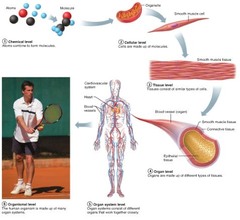
Organism Level

answer
Highest level of organization Collection of organ systems working together to maintain life and health
question
Cell Theory
answer
Building blocks Come from pre-existing cells Smallest structural units
question
Histology
answer
The study of tissues
question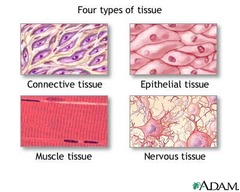
Four Primary tissue types

answer
Epithelial Connective Muscular Neural
question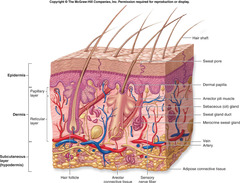
Integumentary System

answer
Protects body from environment, and control body temperature
question
Skeletal System
answer
Provides Support, Protection, Stores minerals, Forms blood cells
question
Muscular System
answer
Provides Movement, Support, Generates Heat
question
Nervous System
answer
Provides rapid control and regulation Coordinates activities of other organ systems
question
Endocrine System
answer
Secretes chemical messengers Directs long-term changes in other systems
question
Cardiovascular System
answer
Carries chemicals, cells, dissolved materials to all parts of the body
question
Lymphatic System
answer
Defends body against infection Returns tissue fluids to bloodstream
question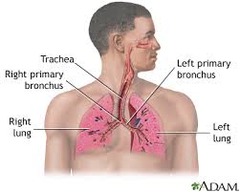
Respiratory System

answer
Delivers air to gas exchange sites in lungs Produces sound
question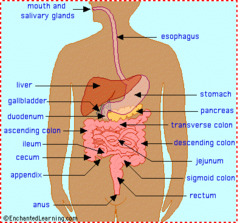
Digestive System

answer
Processes food and absorbs nutrients Excretes wastes
question
Urinary System
answer
Eliminates excess water, salts, and wastes
question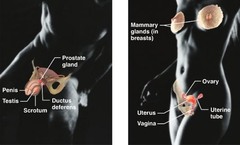
Reproductive System

answer
Provides for the continuity of life Produces sex cells and hormones
question
Homeostatic Regulation
answer
Physiological adjustment to preserve homeostasis in variable environments
question
Feedback
answer
The stimulation of a receptor triggers response that changes environment at that receptor
question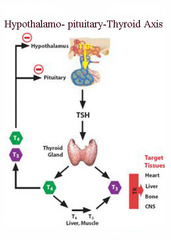
Negative feedback

answer
Effector opposes the original stimulus Minimizes change Primary mechanism of homeostatic regulation in the body example, body temperature
question
Positive feedback
answer
Stimulus produces a response that exaggerates or enhances the original change. Tends to produce extreme responses Does not restore homeostasis
question
History of anatomical terminology
answer
Based on latin or greek words
question
Anatomical position of the body
answer
Standing up Hands at the sides Palms facing forward Feet together and facing forward Eyes facing forward
question
Abdominopelvic Quadrants
answer
Formed by pair of imaginary perpendicular lines that intersect at navel Used to describe locations of patient pains, aches, or injuries
question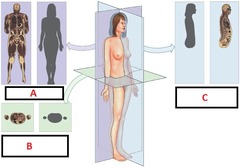
Sectional Planes

answer
Used to describe specific points of reference
question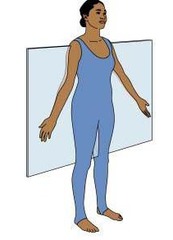
Frontal/Coronal Plane

answer
divides anterior from posterior
question
Sagittal Plane
answer
Divides right from left
question
Transverse/horizontal Plane
answer
Divides superior from inferior
question
Body Cavities
answer
Interior of the Body is subdivided into regions established by the body wall
question
True body cavities are lined by
answer
Serous membrane
question
The Diaphragm separates
answer
The Thoracic cavity and the Abdominopelvic cavity
question
Thoracic Cavity
answer
Deep in the chest wall Two pleural cavities Mediastinum
question
Mediastinum
answer
contains connective tissue and the pericardial cavity contains the heart
question
Pleural Cavities
answer
lined by pleura contains the lungs
question
Abdominopelvic cavity
answer
contains the abdominal cavity and the pelvic cavity lined with peritoneum
question
Abdominal Cavity
answer
Contains many digestive glands and organs
question
Pelvic Cavity
answer
Contains urinary bladder, reproductive organs, and last portion of the digestive tract



